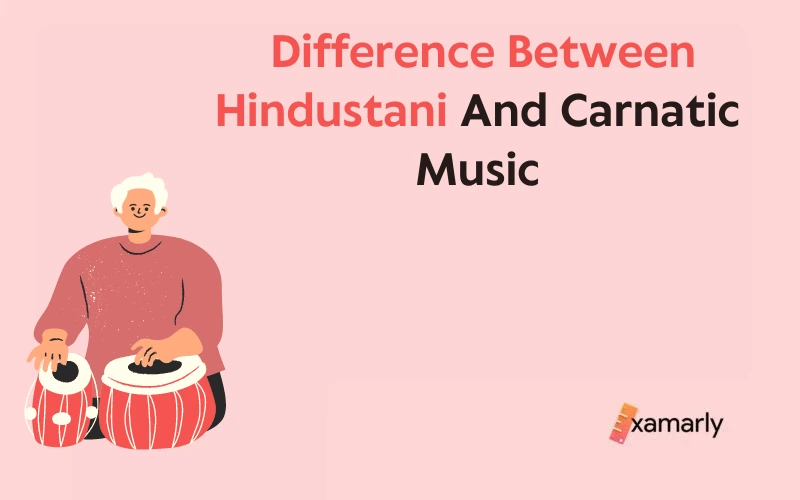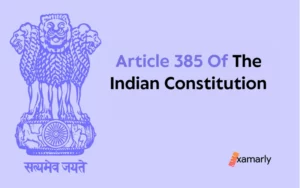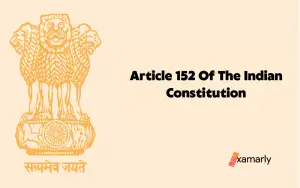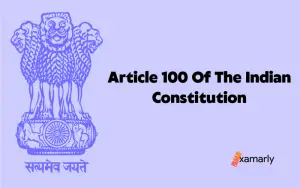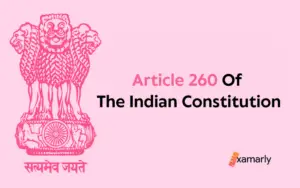Have you ever wondered about what is the difference between Hindustani and Carnatic music? If yes, then your search ends here.
Hindustani and Carnatic music are two distinct and rich musical traditions that have captivated audiences for centuries. Both have their roots in ancient Indian classical music but have developed their own unique characteristics and styles.
While Hindustani music is primarily associated with the northern regions of India, Carnatic music is primarily associated with the southern regions of India. The two traditions have different scales, ragas, and talas, and often evoke different emotions and moods.
If you are curious about the nuances and subtleties that distinguish Hindustani and Carnatic music and want to discover the beauty and diversity of these two rich musical traditions, then keep reading.
- Hindustani Music
- Carnatic Music
- Difference Between Hindustan And Carnatic Music
- Key Distinctions Between Carnatic and Hindustani Music
- Similarity
- Conclusion
- FAQs On Hindustan Vs Carnatic Indian Music
- Write About The Origin Of Hindustani And Carnatic Music.
- Who Is Known As The Father Of Carnatic Music?
- Which Is Older Hindustani Or Carnatic?
- Who Is The King Of Hindustani Music?
- What Are The Different Characteristics Of Hindustani Music?
- How Many Different Kinds Of Carnatic Music Exist?
- What Are The 5 Types Of Carnatic Music?
- What Are Two Similar Features Of Hindustani And Carnatic Music?
- Who Is The Father Of Carnatic music?
- When Did Hindustani And Carnatic Music Separate?
- Why Is It Called Carnatic Music?
Hindustani Music
Hindustani music is one of the two main classical music traditions of India, the other being Carnatic music. It originated in the northern regions of India, particularly in the present-day states of North India, Pakistan, and Bangladesh.
The origins of Hindustani music can be traced back to ancient India, where it was heavily influenced by the Vedic tradition and the Bhakti movement.
The basic structure of Hindustani music is based on a system of ragas, which are melodies that are used as the foundation for improvisation and composition. Ragas are characterized by specific ascending and descending sequences of notes, as well as specific rules governing the use of different notes at different times of the day. Hindustani music also makes use of talas, which are rhythmic patterns that provide the foundation for the composition and performance of music.
Hindustani music is typically performed by a soloist or small ensemble and is divided into different styles two of which are: khayal and thumri.
Hindustani music is a rich and diverse tradition that has played an important role in the cultural and spiritual life of the northern regions of India for centuries. It continues to evolve and adapt to new influences and styles, making it an ever-changing and vibrant art form.
Carnatic Music
The Sanskrit word Karnâtaka Sangîtam, which refers to “traditional” or “codified” music, is the source of the name “Carnatic” for this kind of music.
It has a long and illustrious history, and its composition lies in the Ragam and Thalam systems of music notation.
The southern Indian states of Tamil Nadu, Kerala, Andhra Pradesh, and Karnataka are responsible for the development of the Carnatic style of music.
A prominent Dravidian cultural presence is widely recognized in these states.
Difference Between Hindustan And Carnatic Music
The rich cultural tradition and culture of India are enhanced by Indian classical music. Foreign influences have no impact on Carnatic music, which represents a more unified version of Indian culture.
The beauty, on the other hand, may be found in the contrast between Hindustani and Carnatic music, which is accompanied by the essential nature of melodies, instruments, and rhythm.
| Points of Difference | Hindustani Music | Carnatic Music |
| Origin | Northern regions of the Indian subcontinent are home to the classical music styles known as Hindustani. It has its roots in the Vedic era and is additionally known as Shastriya Sangeet or North Indian Classical Music. | Other names for Carnatic music include Karnatak, Karnataka Sangeetha, and simply Karnatic. It is believed to have originated in Southern India, specifically the city of Hyderabad as well as other places of India where Dravidian is spoken. |
| Centers of Dominance | In the twenty-first century, Delhi, Agra, Varanasi, Jaipur, Gwalior, Mumbai, and Kolkata are the principal hubs for Hindustani music. | Today, the states of Tamil Nadu, Andhra Pradesh, Karnataka, Telangana, and Kerala are the primary hubs for Carnatic music. |
| Instruments | Sitar, Sarangi, Sarod, Tabla, Shehnai, Tambura, and other prominent instruments are used in Hindustani music. | In Carnatic music, some of the most prominent musical instruments include the flute, ghatam, violin, veena, tamboori, mridanga, and harmonium. |
| Modification | Over many generations, it has stayed the same or unaltered. There is room for improvisation and modification. | Due to Persian, Arabian, and Afghan influences, it has evolved over generations. No room is left for improvisation. |
| Compositions | Hindustani music has lighter compositions than Carnatic music. Chaiti, Dhrupad, Dadra, Dhamar, Ghazal, Khyal, Tarana, Tappa, Trivet, Kajari, Ashtapadis, Thumri, and other important compositions are all related to Hindustani music. | Compositions in Carnatic music are known by names such as Arnam, Javali, Keertana, Kriti, Tillana, Padam, Pallavi, Ragamalika, Swarajati, and many others. These compositions are longer, more complicated, and feature a wide range of styles. |
| Core Components | The fundamental components of Swara, Raga, and Tala, which serve as the basis for both traditions, are identical. Alap, Taan, Jor, Jhala, Gat, Alankaar, and Bandish are furthermore present. | Swara, Taala, Raga, and Sruti |
| Number of ragas | There are six primary ragas. | The number of ragas is 72. |
| Content | Instrumental music is given more weight in Hindustani music. | Vocals are very important in Carnatic music, and the words tend to be more devotional. |
| Well-known practitioners | Tansen, Zakir Hussain, Hariprasad Chaurasia, Shivkumar Sharma, Bismillah Khan, Ravi Shankar, Ali Akbar Khan, etc. | Aruna Sairam, M. Balamuralikrishna, M. S. Subbulakshmi, K. J. Yesudas, Nithyasree Mahadevan, Semmangudi Srinivasa Iyer, and others. |
| Thaat of pure swars | Tilawal | Mukhari |
The musical styles of Hindustani and Carnatic are quite dissimilar. Due to the Iranian and Arabian influences that are prominent in Hindustani music as a result of the Islamic invasion of the Northern portions of the Indian subcontinent in the 12th and 13th centuries, there is a significant difference between Hindustani and Carnatic music.
Key Distinctions Between Carnatic and Hindustani Music
Below is a list of the main distinctions between Hindustani and Carnatic music.
- The history of Hindustani music dates back further than that of Carnatic music. There is a blending of Vedic hymns, Islamic traditions, and Persian Musiqu-e-Assil music.
- Carnatic music, which was developed in the 15th and 16th centuries during the Bhakti movement, is remarkably pure.
- The nineteenth and twentieth centuries saw a surge in its growth.
- Carnatic music is primarily concerned with vocal music, and the majority of its pieces need singing in the gayaki style.
- Vocal-focused ensembles are required for Hindustani music.
- The singer is accompanied by a variety of instruments.
Similarity
- The melody is given primary significance in both the Carnatic and Hindustani traditions.
- In each Raga, both have a single leading swara or Vadi swar.
- The Sampoorna Scale, which contains all seven notes, is used by both to describe Janak Thaat or Raga and create Janya Raga.
- Tanpura and Drone both use one or two notes to denote pitch and base in their respective Raga versions.
- Vedic customs and Sanskrit language scripts both contributed to the evolution of music.
- A melodic mode, or raga, is connected to a rhythmic cycle, or tala, as the core idea in both of these systems.
Conclusion
In conclusion, Hindustani and Carnatic music are two gems of Indian classical music that have stood the test of time and continue to captivate audiences around the world. Both forms of music have their own unique characteristics, origins, and influences that make them distinct from one another.
While Hindustani music originated in the northern regions of India and is heavily influenced by Persian and Islamic traditions, Carnatic music developed in the southern regions of India.
These distinct influences have resulted in two forms of music that are so different yet so complementary. It’s a perfect example of unity in diversity. Imagine a fusion of both forms, a beautiful blend of north and south, a harmonious co-existence, a true reflection of India’s rich culture.
If you are a music lover, you should definitely explore both forms of Indian tradition and discover the beauty of Indian musical forms.
Relatable Articles:
FAQs On Hindustan Vs Carnatic Indian Music
Write About The Origin Of Hindustani And Carnatic Music.
The musical traditions of Hindustani and Carnatic share similar ancestry. Carnatic music may be traced back to the Bhakti movement, whereas the origins of Hindustani music can be traced back to the Vedic period. Consequently, both have a strong connection to religion. Both Vedic traditions and the Sanskrit language scripts were used in the development of the music.
Who Is Known As The Father Of Carnatic Music?
Purandaradasa is also regarded as the Karnataka Sangeetha Pitamaha or Father of Carnatic Music. Under the pen name Purandara Vittala, he penned numerous Keerthanas.
Which Is Older Hindustani Or Carnatic?
The traditions split off and developed into diverse forms during the time the Mughals ruled the Indian subcontinent.
Who Is The King Of Hindustani Music?
Tansen was a Hindustani classical musician also referred to as Sangeet Samrat, which is Hindi for “Monarch of Music.”
What Are The Different Characteristics Of Hindustani Music?
Some of the features of Hindustani classical music are:
a. Bhairava, Kausika, Hindola, dipak, sriraga, and Megh are the six main ragas of Hindustani classical music.
b. Improvisation and the exploration of all parts of a raga are given a greater focus in Hindustani music.
c. Hindustani music primarily consists of the following styles: Dhrupad, Khayal, Tappa, Tarana, Chaturanga, Sargam, Thumri and Ragasagar, Hori, and Dhamar.
How Many Different Kinds Of Carnatic Music Exist?
12 types of Carnatic music are there.
What Are The 5 Types Of Carnatic Music?
5 types of Carnatic music are:
a. Gitam
b. Pallavi
c. Kriti
d. Suladi
e. Varnam
What Are Two Similar Features Of Hindustani And Carnatic Music?
(i) Despite stylistic differences, the fundamental components of swara, raga, and tala that serve as the cornerstone of both Carnatic and Hindustani music are the same.
(ii) Carnatic music developed during the Bhakti movement, whilst Hindustani music was created during the Vedic era. As a result, both have strong religious associations.
Who Is The Father Of Carnatic music?
The system that is typically applied to the teaching of Carnatic music was developed by Purandara Dasa, who is referred to as the “father (Pitamaha) of Carnatic music.” He is also regarded as the Karnataka Sangeetha Pitamaha. Under the pen name Purandara Vittala, he penned numerous Keerthanas.
When Did Hindustani And Carnatic Music Separate?
Carnatic music thrived during the Bhakti movement, but Hindustani classical music has its roots in Vedic traditions. In these cultures, hymns from the ancient text known as the Sama Veda were sung instead of chanted. Hindustani music has been around since the Sufi era. During the 12th century, Carnatic and Hindustani style music began to diverge from one another as a result of northern Persian and Mughal influences. While Tamil Nadu, Kerala, Andhra Pradesh, and Karnataka in South India saw the development of Carnatic classical music.
Why Is It Called Carnatic Music?
The name of Carnatic music is reminiscent of the southern Indian state of Karnataka. However, various explanations for the origin of this name have also been proposed. Previously known as Karnataka, Vindhyasa is a region in southern India. Thus, Vindhyasa may have served as the inspiration for the name Carnatic music. Carnatic can also signify a number of other things. It also refers to “a sound that lingers in the ear,” which is another definition of “ancient.”


